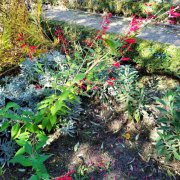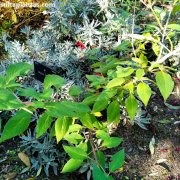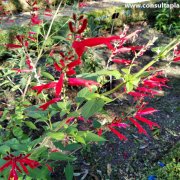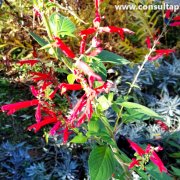Care of the plant Salvia elegans or Pineapple sage |
|
The genus Salvia, family Lamiaceae, includes 1,000 species of shrubs and herbaceous plants native to Asia, Africa, the Mediterranean region, and Central and South America. Some species are: Salvia elegans, Salvia fruticosa, Salvia officinalis, Salvia splendens, Salvia scabra, Salvia nemorosa, Salvia namaensis, Salvia microphylla, Salvia mexicana, Salvia mellifera, Salvia leucantha, Salvia lanceolata, Salvia guaranitica, Salvia greggii, Salvia farinacea, Salvia disermas, Salvia canariensis, Salvia aurea, Salvia apiana, Salvia africana, Salvia vaseyi, Salvia leucophylla, Salvia sclarea, Salvia verbenacea, Salvia x sylvestris. Common names: Pineapple sage, Tangerine sage, Pineapple-scented sage. Scientific synonym: Salvia rutilans. This species is native to Mexico. They are perennial herbaceous plants that reach 1 meter (3.28 feet) in height. The intense green leaves have a pineapple aroma (Ananas). The showy tubular flowers are red. They bloom in summer and autumn. Pineapple sage is used in borders, in flowerbeds along walls, in informal gardens, in pots for patios, terraces and balconies and as greenhouse plants. It's ideal for frost-free Mediterranean coastal gardens. The leaves and flowers are edible. Salvia elegans needs a full sun exposure protected from strong wind. It does not resist frost. The soil can be a mix of normal garden soil with 20% coarse sand and 20% compost. Water regularly in spring, summer and autumn so that the substrate does not dry out completely (never flood). In winter reduce watering. Fertilize once a month in spring and summer with mineral fertilizer. Lightly prune the tips of the branches after flowering to maintain a compact habit. Salvia elegans is a quite resistant plant to the usual pests and diseases. Young plants can be attacked by slugs and snails. If it's grown in a greenhouse it can be attacked by aphids. Tangerine sage is propagated by tender cuttings or semi-ripe cuttings. |
Images of the plant Salvia elegans or Pineapple sage |
Find plants
Salvia elegans or Pineapple sage | Care and Growing
© 2025 FavThemes



